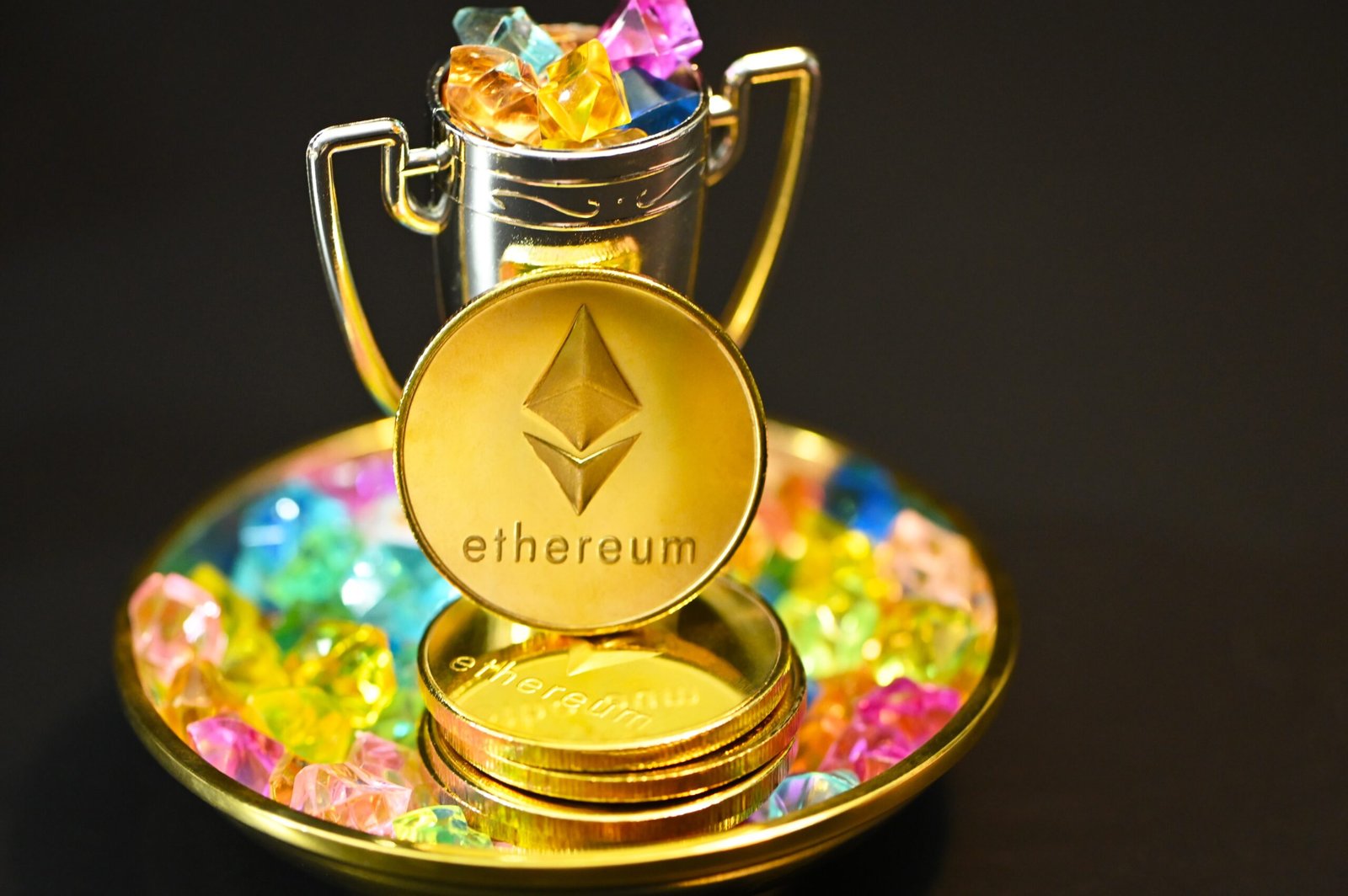Despite Crypto Uptick, PayPal’s PYUSD Remains Silent in the Top Ten Stablecoin Competition
March 12, 2024 | by stockcoin.net

PayPal’s PYUSD, a stablecoin offered by the renowned payment platform, has failed to make a significant mark in the highly competitive top ten stablecoin market. While the cryptocurrency sector has been buzzing with excitement amidst recent upticks, PYUSD seems to have remained rather silent. Despite the growing popularity of stablecoins and the increased adoption of digital currencies by businesses and individuals, PYUSD has yet to emerge as a prominent contender. This article explores the reasons behind PYUSD’s subdued presence in the stablecoin race and delves into the challenges it faces in establishing itself as a strong player in the evolving cryptocurrency ecosystem.
Introduction
The world of cryptocurrencies has witnessed significant growth and innovation in recent years. One area of particular interest is stablecoins, a type of digital currency designed to maintain a stable value. These coins have become increasingly popular as they offer the benefits of cryptocurrencies, such as decentralization and security, while minimizing the volatility often associated with traditional cryptocurrencies like Bitcoin. In this article, we will explore the concept of stablecoins, examine the top ten stablecoin competition, and specifically delve into PayPal’s PYUSD stablecoin.
Overview of Stablecoins
Definition
Stablecoins are a type of digital currency that aim to maintain a stable value by pegging their worth to an underlying asset, such as a fiat currency like the US dollar or a commodity like gold. This pegging mechanism ensures that stablecoins maintain a predictable value, unlike other cryptocurrencies whose prices can fluctuate dramatically.
Purpose and Benefits
The primary purpose of stablecoins is to address the issue of volatility that plagues traditional cryptocurrencies. By maintaining a stable value, stablecoins offer stability and predictability, making them an attractive option for merchants, investors, and everyday users. Additionally, stablecoins provide a bridge between traditional financial systems and the digital currency world, enabling seamless transactions across borders.
Stablecoins also offer several benefits over traditional fiat currencies. They provide faster and cheaper cross-border transactions, eliminate the need for intermediaries like banks, and enhance financial inclusivity by enabling access to banking services for the unbanked population. These advantages have contributed to the growing popularity of stablecoins and their integration into various sectors of the economy.
Top Ten Stablecoin Competition
Brief description
With the increasing demand for stablecoins, several digital currencies have emerged that aspire to achieve stability. The top ten stablecoin competition refers to the battle for dominance among these leading stablecoins in the market.
Leading stablecoins in the market
As of now, the top ten stablecoins include Tether (USDT), USD Coin (USDC), Binance USD (BUSD), Dai (DAI), Terra (LUNA), TrueUSD (TUSD), Paxos Standard (PAX), Gemini Dollar (GUSD), HUSD, and Neutrino USD (USDN). These stablecoins have established themselves as reputable players in the digital currency ecosystem, each offering their unique features and value propositions.
Criteria for ranking
The ranking of stablecoins in the top ten competition is determined by several factors, including market capitalization, trading volume, liquidity, stability, and the degree of decentralization. These criteria reflect the overall adoption, trustworthiness, and stability of each stablecoin and play a crucial role in their competitive positioning.
PayPal’s PYUSD Stablecoin
Background
Perched among the top stablecoins, PayPal’s PYUSD stablecoin has gained attention due to its association with the renowned online payment platform. PayPal, with its massive user base, has the potential to revolutionize the stablecoin market and bring digital currencies mainstream.
Features and functionality
PYUSD is designed to be a digital representation of the US dollar, leveraging PayPal’s existing infrastructure and user base. Users can easily convert their traditional currencies into PYUSD and vice versa through the PayPal platform. It offers quick and seamless cross-border transactions, low transaction fees, and enhanced security due to its blockchain-based technology. PayPal has also integrated PYUSD into its payment ecosystem, allowing users to utilize the stablecoin for online transactions.
Crypto Uptick in the Market
Recent increase in cryptocurrency popularity
The cryptocurrency market has experienced a surge in popularity over recent years, with Bitcoin and other cryptocurrencies reaching all-time highs. This increased interest in cryptocurrencies can be attributed to factors such as growing awareness, institutional adoption, and the potential for high returns.
Impact on stablecoin competition
The rise in popularity of cryptocurrencies has had a significant impact on stablecoin competition. As more individuals and businesses enter the digital currency space, the demand for stablecoins as a means of mitigating volatility and hedging risks has increased. This has intensified the competition among stablecoins, with each striving to capture a larger market share and solidify their position as a trusted and widely used stablecoin.
PYUSD’s Silence in the Competition
Lack of visibility in the market
Despite PayPal’s PYUSD being a strong contender due to its association with the well-established PayPal platform, it has remained relatively quiet in the top ten stablecoin race. PYUSD’s visibility in the stablecoin market has been overshadowed by its competitors, such as Tether and USDC, which have dominated in terms of market capitalization, trading volume, and overall market recognition.
Possible reasons for remaining quiet
There could be several reasons why PYUSD has chosen to remain low-key in the competitive stablecoin market. PayPal may be focusing on gradual adoption and stability rather than aggressive marketing strategies. Additionally, regulatory considerations and ensuring compliance with financial regulations could also be contributing factors to PYUSD’s relatively silent presence in the market. Overall, it remains to be seen whether this strategy will pay off in the long run.
Advantages and Disadvantages of PYUSD
Advantages of using PYUSD
PYUSD brings several advantages to the table for users and businesses. Firstly, its association with PayPal lends credibility and familiarity to the stablecoin, instilling trust among users. The integration of PYUSD within PayPal’s existing payment infrastructure allows for seamless transactions and widespread usability. Additionally, the stability and predictability of PYUSD make it an attractive option for those seeking stability in their digital currency transactions.
Disadvantages or challenges faced by PYUSD
PYUSD does face certain disadvantages and challenges in the stablecoin competition. One of the key challenges is its limited visibility and recognition in the market. While PayPal’s user base provides a significant advantage, it may take time for PYUSD to gain prominence, considering the dominance of other stablecoins. Moreover, the regulatory landscape surrounding stablecoins poses a challenge for PYUSD, as navigating compliance and regulatory requirements can be complex and time-consuming.
Comparison with Other Stablecoins
Key differences and similarities with leading stablecoins
When comparing PYUSD with other leading stablecoins, several key differences and similarities emerge. While all stablecoins aim to provide stability, the mechanisms used to achieve this may vary. PYUSD’s association with PayPal and its seamless integration into the PayPal platform distinguish it from its competitors. However, in terms of market recognition and adoption, Tether and USDC have gained significant traction.
Future Outlook for PayPal’s PYUSD
Possible plans or developments for PYUSD
The future outlook for PYUSD is highly dependent on various factors, including PayPal’s strategic decisions and the evolving regulatory landscape. PayPal may look to expand the integration of PYUSD within its services, further enhancing its usability. Additionally, partnerships with other major players in the cryptocurrency industry could bolster PYUSD’s position and increase its visibility.
Challenges and opportunities ahead
While PYUSD has its advantages, it must overcome several challenges. The competition with established stablecoins will require continuous efforts to gain market share and recognition. Furthermore, the evolving regulatory environment for stablecoins presents both challenges and opportunities. Adhering to regulations and addressing concerns surrounding consumer protection and financial stability will be crucial for PYUSD’s long-term success.
Conclusion
In the race among the top ten stablecoins, PayPal’s PYUSD has the potential to take a leading position due to its association with PayPal’s vast user base and established infrastructure. However, PYUSD’s relatively quiet presence in the competition raises questions about its strategy and market visibility. Nonetheless, with its advantages such as stability, usability, and PayPal’s backing, PYUSD could emerge as a strong contender in the stablecoin market. As the cryptocurrency ecosystem continues to evolve, only time will tell whether PYUSD can carve out a significant place for itself in the competitive landscape of stablecoins.

RELATED POSTS
View all





